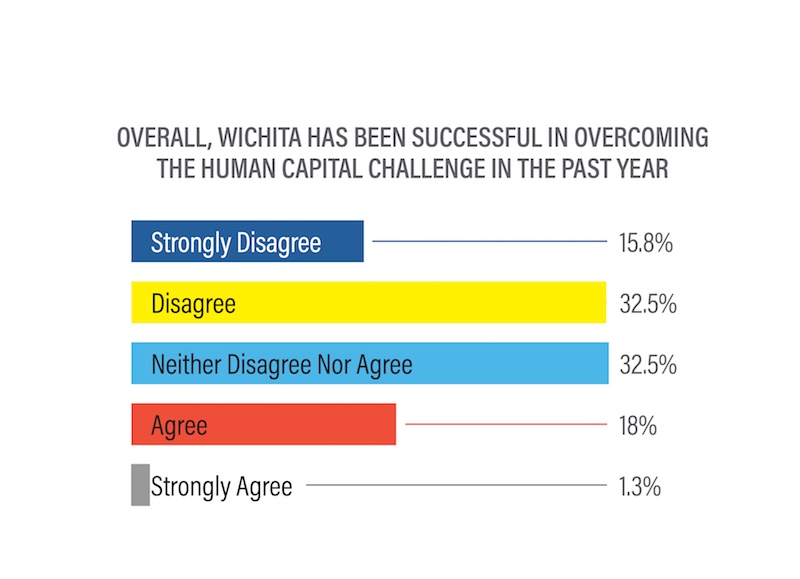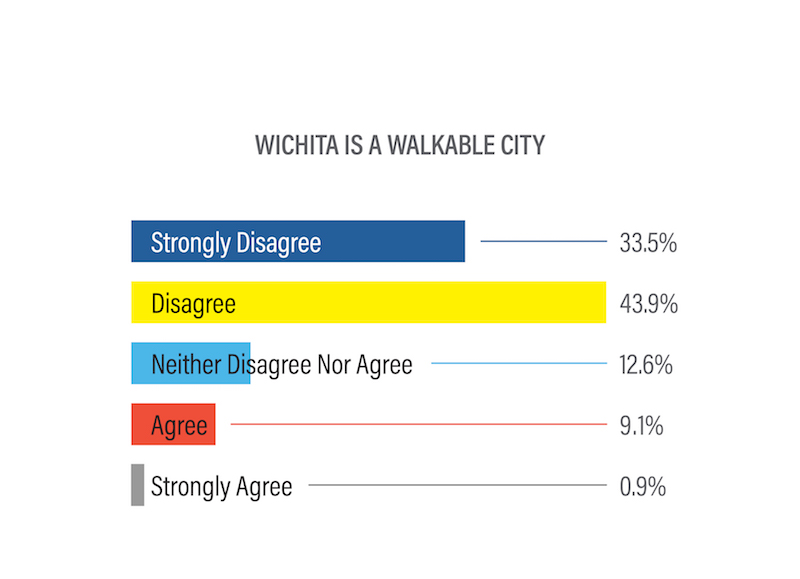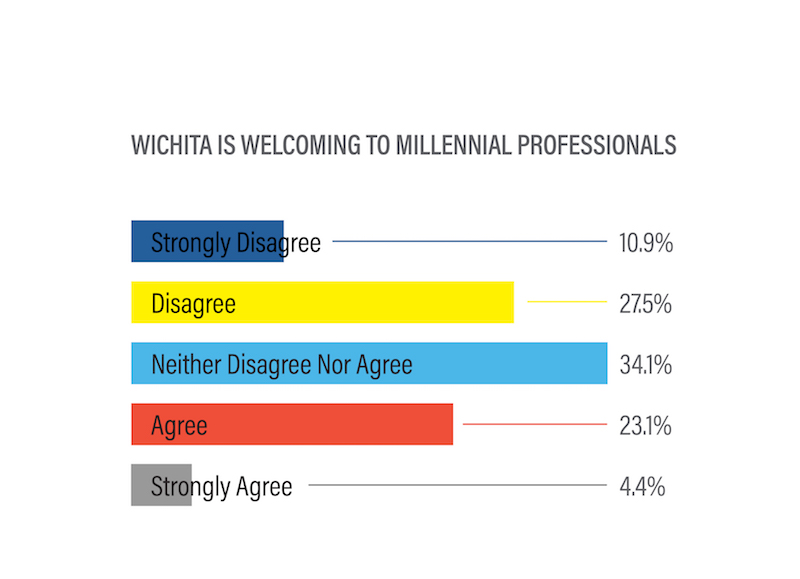READ REALITY CHECK: PART 1 - HOW ARE WE DOING?
READ REALITY CHECK: PART 2 - THE BUSINESS CYCLE CHALLENGE
READ REALITY CHECK: PART 4 - THE PERCEPTION CHALLENGE
READ REALITY CHECK: PART 5 - THE ENTREPRENEURSHIP CHALLENGE
PART 3: THE HUMAN CAPITAL CHALLENGE
Put simply, human capital is the ability for a city's residents to get a suitable job and the ability for a city's businesses to find the workers it needs to operate. It has to do with the skill and education levels of the individuals in the workforce and how they are put to use in an innovative, productive economy.
In many ways, human capital is the bridge between the business cycle and perception. Businesses require a strong workforce to move into a city, and a city bears the responsibility for building an attractive and unique identity, including amenities like arts, culture and entertainment.
Reach Advisors analyst James Chung found that Wichita's human capital lags compared with other Midwestern cities. In his original presentation, Chung said that if Wichita was behaving like other cities, it would have about 10,000 more workers in their prime earning and spending years, ages 35 to 54. He also found that Wichita hires only 1.8 percent more college graduates than it did 20 years ago. In that same timeframe, the U.S. hiring rate went up by 6.3 percent.
The way we view human capital is important because it determines the types of educational opportunities and programs we choose to support. It also determines the types of people we attempt to attract — and the types of business and government policies we use to attract them.
So how do we view Wichita's human capital in its current state? And how does it mesh — or clash — with the reality around us? We've set up this article to explore just that. First, read about how Wichitans view our Human Capital Challenge. Then, see if the evidence supports or refutes our views.
PERCEPTION: THE STANDARD OF 'GOOD.'
As we work through our perceptions of human capital, it's important to remember that while progress of any kind is more good than bad, we need to be thinking comparatively. We could be making progress in attracting a stronger workforce, but if we're not improving at the rate of other Midwestern cities — or if they're pulling workers away from us — we're not going to see ultimate success.
In the Human Capital Challenge, it seems that Wichitans are fairly jaded by the progress they've seen.

This question was asked in the Four Challenges Survey we conducted in July, which had more than 700 respondents. A total of 48.3 percent of respondents said they either disagreed or strongly disagreed with the idea that Wichita has been successful in combating the Human Capital Challenge in the past year. That wouldn't be so bad except 32.5 percent still didn't agree with the statement, leaving only 19.3 percent to say they agreed or strongly agreed.
Some of the other responses in the survey may explain why Wichitans have this perception. Human capital is a complicated issue with many variables. Attracting a millennial workforce, for instance, takes a different set of tools than attracting a workforce of those from older generations. Millennials cite a need for transportation options, with nearly half of car-owning millennials saying they would be willing to walk or bike given the opportunity.

Our respondents believed Wichita is fairly inaccessible on foot, with 77.4 percent saying they either disagreed or strongly disagreed to the idea that Wichita is walkable. This means this aspect of Wichita likely won't attract millennials over other cities that are more progressive when it comes to transportation. And our peers do seem to be more progressive.
WalkScore.com, a website that determines walkability and bikeability for U.S. cities, calls Wichita a "car-dependent city," which means most errands require a car. Cities with scores of 70 to 89 are considered very walkable while scores of 90 to 100 are a "walker's paradise." Wichita scored a 35 on walkability and a 44 on bike infrastructure, meaning the city has minimal bike infrastructure. This same site gave Des Moines and Omaha walk scores of 45 and Cleveland a walk score of 60.
While transportation is important, it won't do much to attract millennials if other aspects of the city make them feel unwelcome.

Respondents felt that Wichita was not doing its best to welcome millennials, with only 27.5 percent stating that they agreed or strongly agreed to the idea that Wichita is welcoming to young professionals. When asked if Wichita had done a good job at attracting young talent from outside the city, only 10.5 percent of respondents agreed or strongly agreed, with 61.4 percent saying they either disagreed or strongly disagreed.
This perception is particularly disturbing because in 2015, the Pew Research Center found that millennials surpassed Generation X as the largest generation in the U.S. workforce. If we're not welcoming to the nation's largest working generation, how do we expect to build a strong workforce that attracts successful businesses?
Together, these perceptions paint an overall bleak picture for Wichita's Human Capital Challenge. But they are only perceptions. What does reality show us?
REALITY: EXAMPLES OF PROGRESS
Just as in the business cycle, reality is a tough thing to gauge for human capital. Our workforce ebbs and flows and doesn't necessarily track with easier-to-track statistics like unemployment. We can watch enrollment numbers at Wichita universities, but that still doesn't guarantee they stay in the city once they graduate.
One of the best ways to track progress in human capital is to track the businesses that require human capital to operate. If we attract and keep strong businesses that are confident in their ability to attract talent in Wichita, we may have a shot.
Here are some examples of real progress in human capital:
Cargill stays in Wichita, marking confidence in their ability to attract talent within the city.
Virginia-based business-outsourcing company Faneuil plans to bring up to 500 new jobs to Wichita.
SNT Media brings much-needed tech jobs to Wichita.
Many of these examples are tied closely to the business cycle, as human capital and our economy go hand-in-hand. Whether this is the lasting change we need to see, or small successes that do little to increase Wichita's competitive advantage, is yet to be seen.
As our survey indicates, Wichitans are cautious about making presumptions about the Human Capital Challenge. In the upcoming fourth part of this series, we will talk about the perceptions and realities of the Perception Challenge, and how it works to attract outsiders and better the lives of those already here.